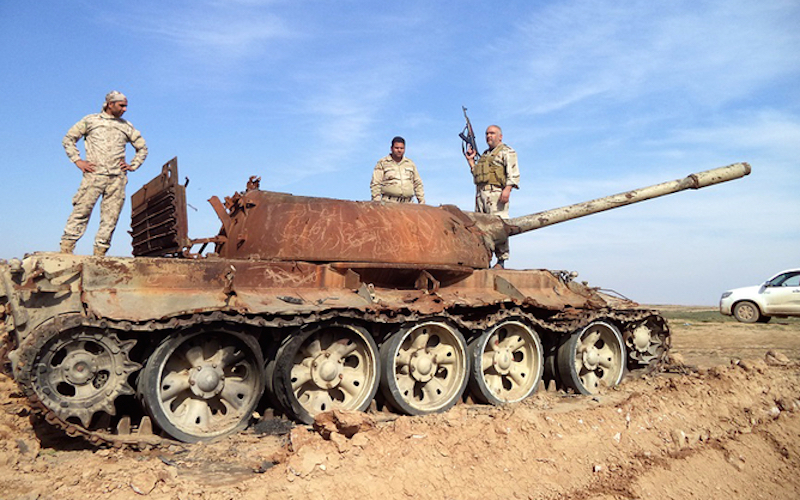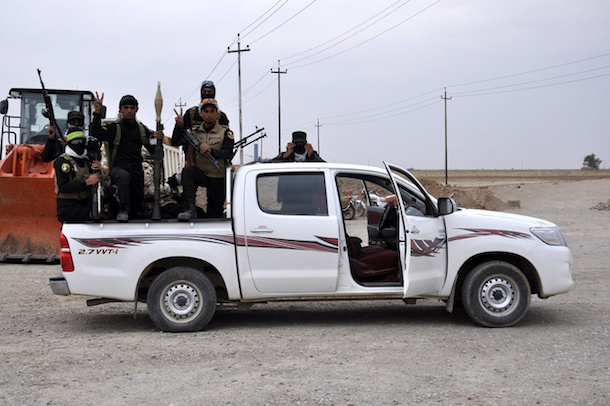
Tikrit Offensive: U.S. and Iran Line Up Against Islamic State
The Iraqi army has begun an assault to take back the town of Tikrit from Islamic State (IS) forces. This has been billed as the start of an offensive which could, if it succeeds, lead on to an attempt to re-take Iraq’s second city of Mosul, which has been in the hands of IS since the summer of 2014.
Tikrit is hugely significant, both strategically and symbolically. It is located on the Tigris River, 120km north of Baghdad on Route 1, which runs a further 150 km north on to the northern city of Mosul. This highway is one of only two main routes from Baghdad to the north, and while the highway does bypass the town proper, it will be critically important for any government attempt to retake Mosul.
Tikrit also has considerable symbolic significance as the home of Saddam Hussein, and his most loyal support base. That means little to the leadership of IS, which remembers the Hussein regime as just as apostate as the House of Saud, but many former Ba’athists have nonetheless supported IS in its rebellion against the Shia-dominated government in Baghdad.
The loss of Tikrit would be a major blow to them, even if they see their alliance with IS as nothing more than a grisly marriage of convenience. There will be extensive media coverage of this war but the news will originate almost entirely with the Iraqi government and the US-led coalition. Anything coming from Islamic State sources will be treated as propaganda, but with no Western or regional journalists in Tikrit, accurate information will be very hard to come by.
Pitching in
That means there’ll probably be reports of substantial early progress, but they are not necessarily to be believed. There are two other things to watch out for instead, as they will indicate much more about the real trajectory of the war against IS.
On the one hand, the involvement of Iran will be a crucial factor. In particular, Tehran will be represented in the guise of pro-Iranian Shia militias, many of them from Sadr City in eastern Baghdad, who make up a large part of the force and provide essential support to the more regular Iraqi Army units.

There are many indications that they have remarkably close connections with Iran’s Quds Force, which is the international arm of the Iranian Revolutionary Guard Corps (IRGC).
The IRGC has had many officers and other ranks operating in Iraq for the past year or more, involved in training and equipping the militias and the Iraqi Army itself, which in any case is mostly Shia in composition. There are reliable reports that the head of the Quds Force himself, General Qasem Soleimani, is directly involved in the military attack on Tikrit.
The significance of the Shia militia involvement is that many of them have acquired a very nasty reputation for their treatment of Sunni civilians, and further atrocities by them during the fight for Tikrit will stir up even more anger and opposition from Sunni clans in and around Tikrit.
Surgical precision
Then there is the US’s involvement, the scale and role of which has yet to be determined.
Throughout February, IS units have been reinforcing Tikrit, bringing in copious amounts of weaponry and ammunition as well as searching out inhabitants deemed to be unreliable. IS’s determination to defend Tikrit means it is highly unlikely that Iraqi forces will be able to overrun the town, and that heavy air support from the US and other states (including Iran) will be necessary.
Given the densely populated nature of the town, any such support may require forward-based Special Forces missions to pinpoint targets. These may be primarily American-led, but given that British, Canadian, Australian, German and other Special Forces are already operating in Iraq, others will be involved.
Given their long experience of working with the US Joint Special Operations Command (JSOC) in the “dirty war” in 2005-08 as part of Task Force 145, we can certainly expect SAS to be on the ground if their skills are needed.
Both Iranian and coalition involvement will be very difficult to track, at least in the short-term. For diverse reasons a vision of Iraqi dominance in the fighting will be fostered whereas the reality is likely to be of strong support by Iran and the United States, even acting in concert but not admitting it. War, as well as politics, does indeed make strange bedfellows.
This article was originally published on The Conversation. Read the original article.

